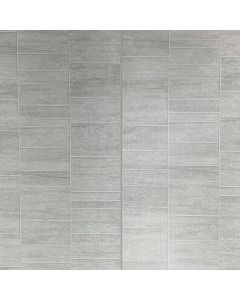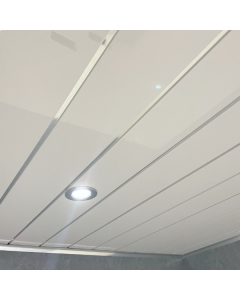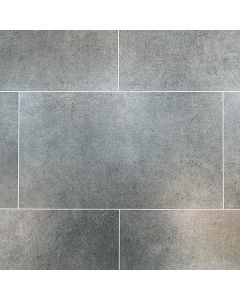How To Choose The Perfect Bathroom Sink
A bathroom sink can really transform your bathroom – especially if it works perfectly in your space. It can become the focal point of a brand-new bathroom suite or could even be slotted into an old bathroom to revitalise it.
With so many choices on the market nowadays, it can be overwhelming to choose just one new sink. So, we’ve composed a handy guide to help you with things you need to consider when choosing a bathroom sink.
Before you shop
Because there are so many options, the best place to start is by working out generally what you think you might want. You should try to do this before you shop to narrow down your options, alongside bearing in mind the budget you are working with. Bathroom installations can come at a cost, and you should be aware of what’s in your range before you set your heart on anything extravagant.
If you’re replacing your whole bathroom suite, you might want to consider how you want to incorporate your new sink, and where exactly you will fit it. Where you are just replacing a pre-existing sink, you should consider how much space you have to work with, and what effect you want it to have on the room and on the other installations already in place.
Additionally, you need to work out what aesthetic you want to go for. Do you want a vintage fixture, or something more contemporary? This will help you when you start to shop.
And finally, remember that whilst aesthetics are important, in a bathroom they aren’t the only thing that counts. Your new sink has to be functional as well as beautiful and needs to be able to cope with heavy usage on a daily basis.
Materials
You should select a material based on both its visual and practical qualities. It’s also important to note that some sink materials might not be best for a well-loved family bathroom and should perhaps be reserved for an adult’s only en suite.
Ceramic
This is the most standard and common material used for bathroom sinks. Ceramic comes with a high-gloss finish, which makes them visually appealing and easy to clean. Not only are they easily cleaned, but they also greatly enhance the cleanliness of the room as a whole.
This is the perfect material to use for a family bathroom, as they are sturdy as well as aesthetically pleasing.
Resin or solid surface
These days, you can pretty much have a sink made out of anything. Resin sinks, particularly, are really low cost. They can be installed as part of a vanity unit and are visually striking depending on the style you go for.
You can also have a sink moulded into a solid surface, like marble. This creates a seam-free look and is also a very hygienic option. However, choosing this option will come at a cost.
Stone
Stone sinks are a more hyper-modern option. Because of this, they tend to be more expensive – but also more luxurious. They are typically displayed on top of a counter, in order to let the stone be the star of the show.
This material would work really well offset against a concrete panel, or even an exposed brick surface. Whilst visually stunning, it should be noted that they can be fussy to maintain. You should follow the supplier’s instructions on how to seal and clean these sinks to the letter. It should also be noted that stone sinks aren’t as sturdy as ceramic, so you should avoid installing them in bathrooms frequently used by children.
Glass
This is also a favourite material for countertop sinks. Like stone, it has a striking impact and can look really chic and modern. However, you must be careful to use it in a bathroom where no heavy objects could be placed on it, due to the obviously fragile nature of the material.
A glass sink could look particularly stylish against the contrast of a wooden wall panel, or a clean subway tile.
Wood
This doesn’t seem like an immediately obvious choice, but wooden elements in bathrooms is a growing trend. They are a really dramatic installation, and the out-of-place material would be sure to attract a lot of attention in any bathroom. Wooden sinks are amongst some of the more contemporary sinks, and like stone they come at a cost, and must be cared for properly.
How to install your bathroom sink
The way you choose to install your sink is dependent both on the material of choice, and the space you have to work with. If your bathroom, like many nowadays, is a bit smaller, you must consider what will make the best use of the space you have to work with. You should also note how much storage you will require.
Pedestal sinks
Pedestal sinks are an extremely popular fixture and will work in both vintage and contemporary designs. These have a stand on the floor that hides any pipework, and are a traditional look. However, they have substantial presence in your bathroom, and because of this they are better suited to a larger space.
If you have your heart set on a pedestal sink but your space is limited, you can also opt for a semi-pedestal installation. These are wall-hung, but still have a pedestal below that is usually shorter. The advantage is that the plumbing is still concealed, but you have fewer fittings on the floor to stop the room from looking cluttered.
These are a really great option for households with children. Pedestal sinks in their traditional form can be quite tall, and therefore not necessarily practical for smaller users. To the opposite effect, if you live with taller individuals, a semi-pedestal sink can be installed at a comfortable height.
Inset sinks
These sinks can be part of a vanity unit or a washstand, and include the solid surface sinks we mentioned already. They have useful space on either side of the basin itself, which proves handy for storage purposes. Inset sinks can be placed on stop of a storage unit or a worktop – either way, they will look sleek and seamless.
Inset sinks work particularly well for small bathrooms that require a bit more storage. They can be installed on top of a cupboard, giving storage both on the sides of the sink itself and underneath it.
Semi-recessed sinks
These sinks are designed to be placed into a vanity or cupboard. The front protrudes and gives a lot of space around the sink. However, this keeps the basin itself as the focal point whilst still retaining a lot of practicality. Because of this, they work well in small bathrooms.
Countertop sinks
Countertop sinks are a really attractive feature, and allow the sink itself to be the star of the show. They cooperate will with stone or wooden sinks, making the basin the focal point of the installation.
They allow the sink to sit atop the furniture with plumbing hidden below in a cabinet. This cabinet can also allow for storage solutions underneath. These sinks are also a universally popular type, because they can be any shape or height that you require – you’re not restricted.
What is a vanity unit?
A vanity unit handily combines the functions of a storage space and a sink basin into one piece of furniture. They are a versatile piece of furniture for a bathroom and they can fit into any style of bathroom.
What is a butler sink?
Similar to Belfast sinks, butler sinks have a similar aesthetic but are slightly shallower and wider. They don't historically feature an overflow, but you can find these on many modern variations. These work well in kitchens, but can also look great in a bathroom too.
Important things to note
You should remember that most sinks come with pre-drilled tap holes, which will determine the kind of taps you will be able to choose, and how you can install the sink. Therefore, if you have a very specific idea of what you want your whole bathroom to look like, right down to the taps, you might want to check which sinks they cooperate with.
It’s also important not to forget the sink waste: plug and chain designs can look traditional, but lots of modern sinks don’t have a place for the chain to attach itself. Most wastes nowadays opt for a pop-up plug hole, or a flip top. So, be sure that these fit in with your vision before you start shopping.

























